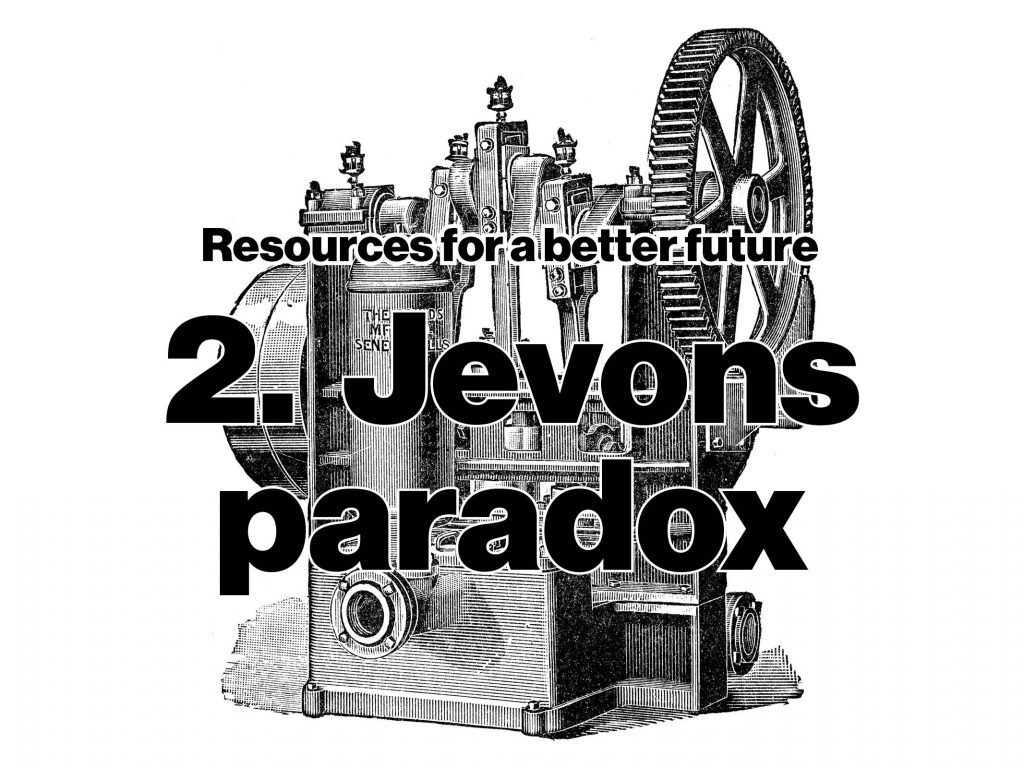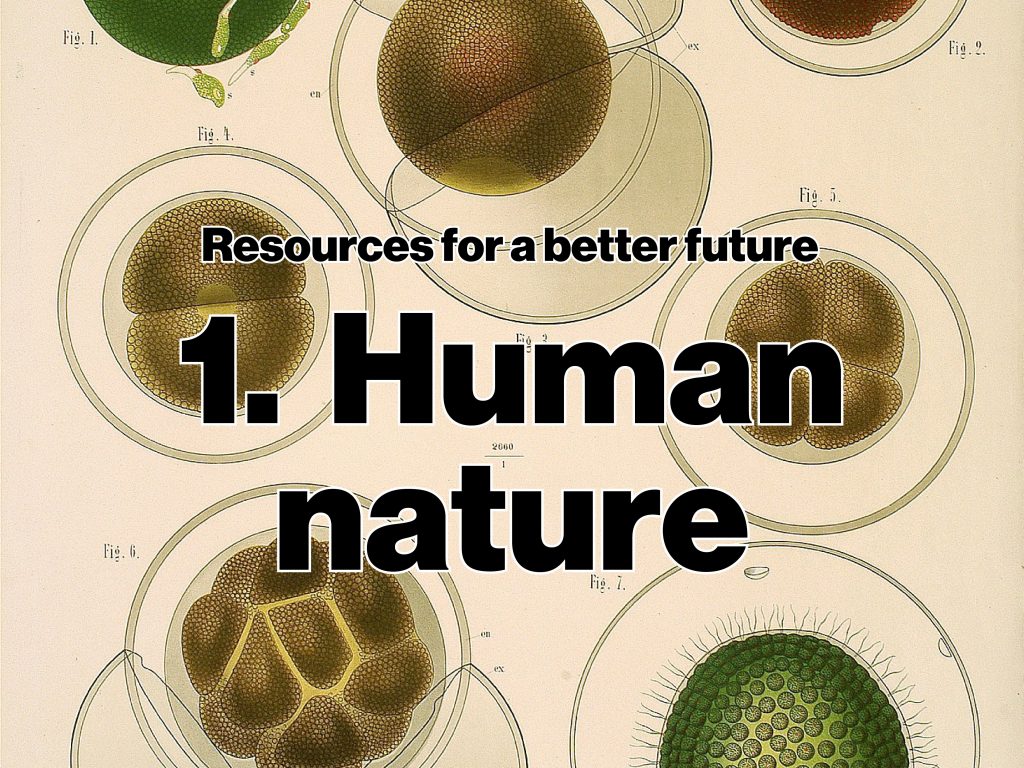
by Sam Bliss
The Jevons paradox is that efficiency enables growth. New technologies that can produce more goods from a given amount of resources allow the economy as a whole to produce more. More resources get used overall.
This is the magic of industrial capitalism and the secret of growth. Economists have known it for a long time. So why is it called a paradox?
A question of scale
The paradox is that we tend to assume that the more efficiently we use a resource the less of it we will use.
This is the case in our personal lives. If you buy a more fuel-efficient car, you might drive a little bit more but overall you will likely burn less gasoline. Switching to a low-flow showerhead typically saves water at home.
This efficiency-for-conservation logic appears correct for most subsets of the economy. When a business switches to energy-efficient light bulbs, its electricity bills go down. Municipalities that require new buildings to meet energy efficiency standards might see energy use decrease within city limits.
But at the level of the whole economy, the reverse is true. These efficiency gains contribute to increasing production and consumption, which increases the extraction of resources and the generation of wastes.
Energy-efficient technologies do not reduce carbon emissions
This suggests that energy-efficient technologies do not reduce carbon emissions, that fertilizer-saving precision farming techniques do not decrease fertilizer applications overall, and that increasing agricultural yields does not spare land for nature. Real-world evidence supports these claims.
Environmental policy focused on efficiency gains does not by itself benefit the environment. Economies grow by developing and deploying increasingly efficient technologies.
How growth happens
Consider a hypothetical example. If the owner of a tea kettle factory installs a new machine that can make one kettle from less raw copper than before, he might continue to produce the same amount of kettles at a lower cost, or he might choose to make more kettles overall from the same amount of copper.
Either way, profits will go up. The factory owner can buy more machines to make even more kettles from even more copper. Or he can invest those profits elsewhere, increasing production in another sector of the economy and thus increasing the use of copper and other materials.
As more tea kettle factories adopt the copper-saving technology, they might start selling kettles at lower prices to compete for customers. As tea kettles get cheaper, people will be able to buy more of them. Since more kettles can be sold, factories will make more—using more copper.
Copper’s price might increase as factories increase their demand for it. When the price goes up, more potential copper mining sites become profitable, which further raises supply.
Or, even if all tea kettle factories end up using less copper with the new, copper-saving machines, copper’s price will fall and other sectors will be able to afford more copper and therefore demand more.
Cheaper copper could make all copper-containing things cheaper, not just tea kettles, leaving people with more money to spend. They can demand more of the products of all economic sectors, further increasing the use of many materials, including copper.
Cheaper copper might increase industrial profits, too, which capitalists either reinvest to increase production or spend on luxury things.
Even if the initial factory owner decides to give his workers a raise rather than keeping the profit or increasing production, then the workers will have more money to spend on tea kettles and everything else. Even if they decide to save all that additional income, the banking sector will direct it toward investing in more new machinery to produce more things from more materials.
No matter what, it seems, copper consumption rises in the end, because efficiency increases kickstart the growth machine.
The more efficiently society can use copper, the more of it will generally be used. Unless, that is, society intentionally limits its use of copper.
The same goes for just about any resource.
150 years of more
English economist William Stanley Jevons gets credit for being the first to point all this out. In 1865, Jevons found that as each new steam engine design made the use of coal more efficient, Britain used more coal overall, not less.
In 1865, Jevons found that as each new steam engine design made the use of coal more efficient, Britain used more coal overall, not less
These efficiency improvements made coal cheaper, because steam engines, including the ones used to pump water out of coal mines, required less coal to produce a given amount of useful energy. Yet increasingly efficient steam engines made coal more valuable too, since so much useful energy could be produced from a given amount of coal.
That might be the real paradox: the ability to use a resource more efficiently makes it both cheaper and more valuable at the same time.
In Jevons’ time, more and more coal became profitable to extract as more and more uses of coal became profitable. Incomes increased as coal-fired industrial capitalism took off, and profits were continually invested to expand production further.
A century and a half later, researchers from the Massachusetts Institute of Technology found that as industrial processes have gotten more efficient at using dozens of different materials and energy sources, the overall use of these materials and energy sources has grown in nearly every case. The few exceptions are almost all materials whose use has been limited or banned for reasons of toxicity, like asbestos and mercury.
In an economy designed to grow, the Jevons paradox is all but inevitable. Some call it the Jevons phenomenon because of its ubiquity. Purposefully limiting ourselves might provide a way out.
Fighting growth with collective self-limitation
To prevent catastrophic climate change, humanity must rapidly reduce the combustion of fossil fuels. But despite decades of policy efforts and international negotiations, emissions continue to rise every year.
The focus on making energy use more efficient is paradoxically worsening the problem, as efficiency gains facilitate increasing, not decreasing, carbon burning. And renewable energy sources are adding to fossil fuels, not replacing them. Earth’s limited sources of coal, oil, and gas will not run out in time to save the stable climate.
But what if governments around the world treated coal like they do asbestos? What if petroleum extraction and uses were subject to strict limits like those of mercury?
To limit the use of fossil fuels, or anything else, society must impose limits on itself, preferably democratically
To limit the use of fossil fuels, or anything else, society must impose limits on itself, preferably democratically. We must set limits on our own activity.
Once binding limits are in place, efficiency gains become one of several tools for staying within them. With a hard cap on the total amount of oil that can be burned, adopting increasingly fuel-efficient machinery cannot backfire and spark growth of oil-burning economic activity. Instead, fuel efficiency would allow more useful work to be done with the limited amount of oil that society permits itself to combust.
Of course, we must also be skeptical of the maximizing mentality that considers efficiency and more to be good things as such. Collectively limiting ourselves offers not just an escape from capitalism’s endless loops of efficiency and growth; it also provides the constraints necessary to imagine and act out new ideas about what makes the good life, as well as revive and protect traditional lifeways.
For many communities around the world, a global project to limit resource use could bring liberation from pollution, exploitation, and the one-way path toward Western-style development. To them, limits do not mean reductions or sacrifice but an opportunity to pursue goals other than growth.
Efficiency makes growth. But limits make creativity.
Once free from the efficiency mindset, we see that setting legal limits is not the only solution to the Jevons phenomenon. Society can also purposefully choose less-efficient production processes, setting the paradox in reverse by constraining the potential scale of the economy. If efficiency makes growth, maybe inefficiency makes degrowth.
Further resources
David Owen. “The Efficiency Dilemma.” The New Yorker, December 12, 2010.
This New Yorker piece captivatingly chronicles the history of the Jevons paradox as an idea and as a real material force.
Christopher L. Magee and Tessaleno C. Devezas, “A Simple Extension of Dematerialization Theory: Incorporation of Technical Progress and the Rebound Effect,” Technological Forecasting and Social Change 117, no. Supplement C (April 1, 2017): 196–205.
This is the article in which MIT researchers show that the Jevons paradox applies to pretty much every material, energy source, and industrial process for which data exists.
Salvador Pueyo. 2020. “Jevons’ Paradox and a Tax on Aviation to Prevent the next Pandemic.” Preprint. SocArXiv. https://doi.org/10.31235/osf.io/vb5q3.
The Jevons paradox holds that using a resource more efficiently leads to economic growth and thus more of that resource is used overall. In this article, Salvador Pueyo shows that, similarly, advances in disease control have enabled humans and livestock to live at higher densities, eventually bringing about more ferocious outbreaks. He argues that the aviation industry shifts costs onto society by spreading diseases around the world, and should thus be taxed.
Sam Bliss, “Why growth and the environment can’t coexist.” Grist.
This video explains degrowth in 4 minutes, starting from a Jevons-inspired explanation of how increasing efficiency in orange juice production leads to more oranges consumed, not less.
Sam Bliss is a wildly inefficient researcher, writer, gardener, and warehouse manager of Food Not Bombs Burlington. He participates in and studies non-market food systems in Vermont.
